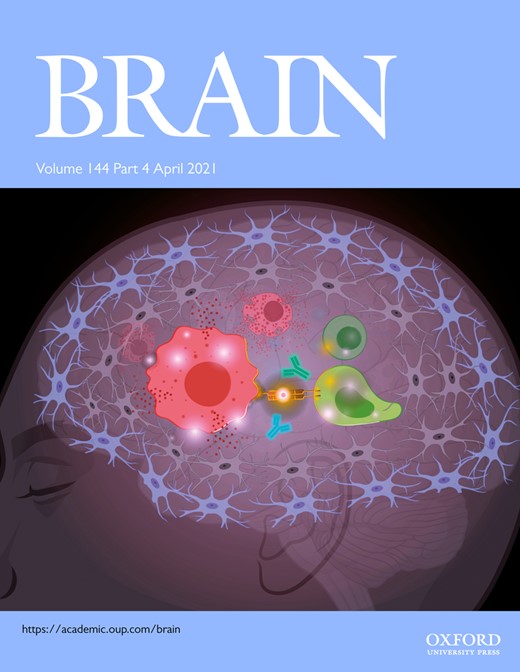-
PDF
- Split View
-
Views
-
Cite
Cite
Arpan R Mehta, Puja R Mehta, Stephen P Anderson, Barbara L H MacKinnon, Alastair Compston, Reply: The etymology of ‘neurology’, redux: early use of the term by Jean Riolan the Younger (1610), Brain, Volume 144, Issue 4, April 2021, Page e39, https://doi.org/10.1093/brain/awab024
Close - Share Icon Share
It is axiomatic that those who claim priority for dates and details on behalf of specific individuals celebrated in the history of medicine (and other disciplines) give hostages to fortune on the accuracy of who first said ‘what’ and ‘when’. Dr Janssen points out that the Parisian anatomist, Jean Riolan the Younger (1580–1657), used the word ‘neurology’ before Thomas Willis (1621–75).1 We stand corrected. As an aside, unlike Riolan, Willis preferred Greek typography when using the word ‘νευρολογία’, accurately reflecting the derivation of the compound word. In the passages to which Dr Janssen refers, Jean Riolan the Younger directs readers back to a six-page section on ‘DE NERVIS’ in his treatise Anatome corporis humani, included in Jean Riolan the Senior’s Opera omnia: tam hactenus edita, quam posthuma (1610).2(pp109-115) Young Riolan wrote:
[DE PARTIBUS CEPHALICIS, Capitis diuisio & Cerebri structura declarantur,2(p160)] Ad anatomen cerebri pertinet septem nervorum historia qui ex basi cerebri scaturiunt, sed cum in Neurologia fuerint explicati, ab eorum repetitione nunc abstinebo, contentus dixisse omnia semel [The study of the seven nerves which bubble forth from the base of the brain is relevant to the anatomy of the brain, but since they have been explained in Neurology (i.e., in my study of nerves), I shall abstain from their repetition, content to have said everything once.]
[DE PARTIBUS INTERNIS OCULORUM,2(p164)] Nervi duo in oculis observantur, Opticus & Motorius de quibus actum est in Neurologia. [Two nerves are observed in eyes, the Optic and the Motor, which have been dealt with in Neurology (i.e., in my study of nerves)].
History favours Willis over Riolan when weighing up contributions to epistemology of the nervous system. Willis wrote four treatises on aspects of the brain and nervous system, and on muscular motion, together comprising 1532 printed pages in the original editions (written in Latin apart from selected Greek words): Cerebri anatome (1664), Pathologiæ cerebri (1667), De motu musculari (1670) and De anima brutorum (1672). Riolan identified some parts of the nervous system, and his name survives eponymously in the context of one muscle that closes the eyelid. Mainly he is remembered for the fact that, ignoring all other critics of his De motu cordis (1628), William Harvey was prompted to write a further treatise, De circulatione sanguinis (1649), in reply to Riolan’s view that the blood circulates but only about three times each day. In writing that ‘Willis did not claim to be citing a new term, and never properly defined it’, may we draw Dr Janssen’s attention to the second part of Cerebri anatome,3(pp274-456) entitled Nervorum descriptio et usus, Willis’s ‘doctrine of the nerves’. As Dr Janssen will know, Willis was referring to the anatomy and properties of the cranial nerves. His interest lay primarily in those nerves which he believed to originate in the cerebel (cerebellum) and which orchestrate reflective, or involuntary, responses of the nervous system of brutes and of man. His most detailed account is of the ‘wandring nerve’, now renamed the vagus, and the intercostal nerve, the sympathetic output of the brain. More generally, Willis’s concept of νευρολογία was regarded by Sir Charles Sherrington (1857–1952) as an early, if not the ‘first’, adequate description of reflex function of the nervous system.
Data availability
Data sharing is not applicable to this article as no new data were created or analysed in this study.
Competing interests
The authors report no competing interests.
References


